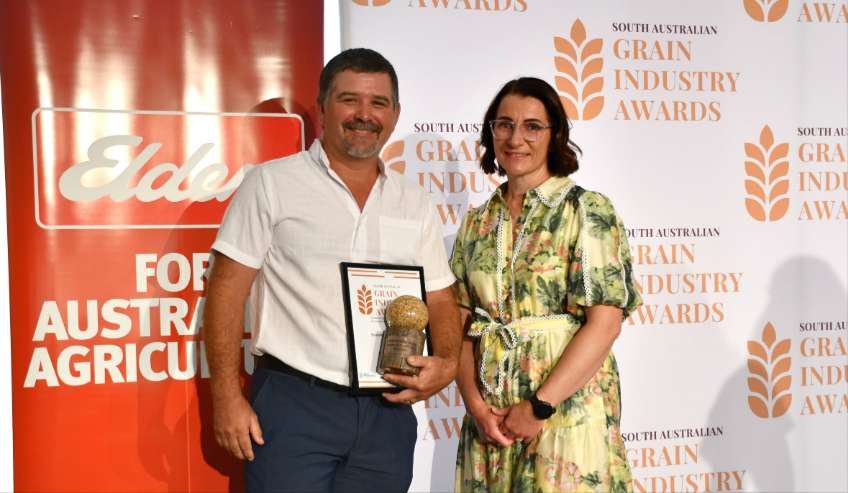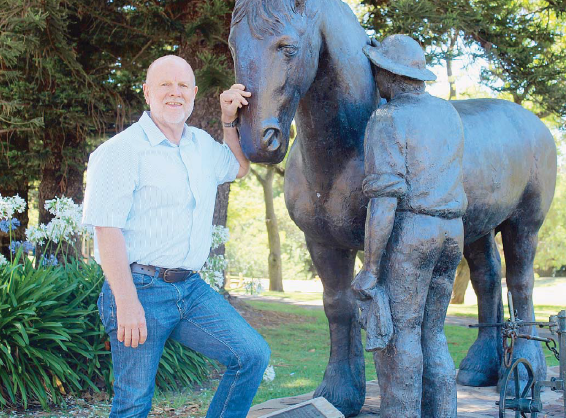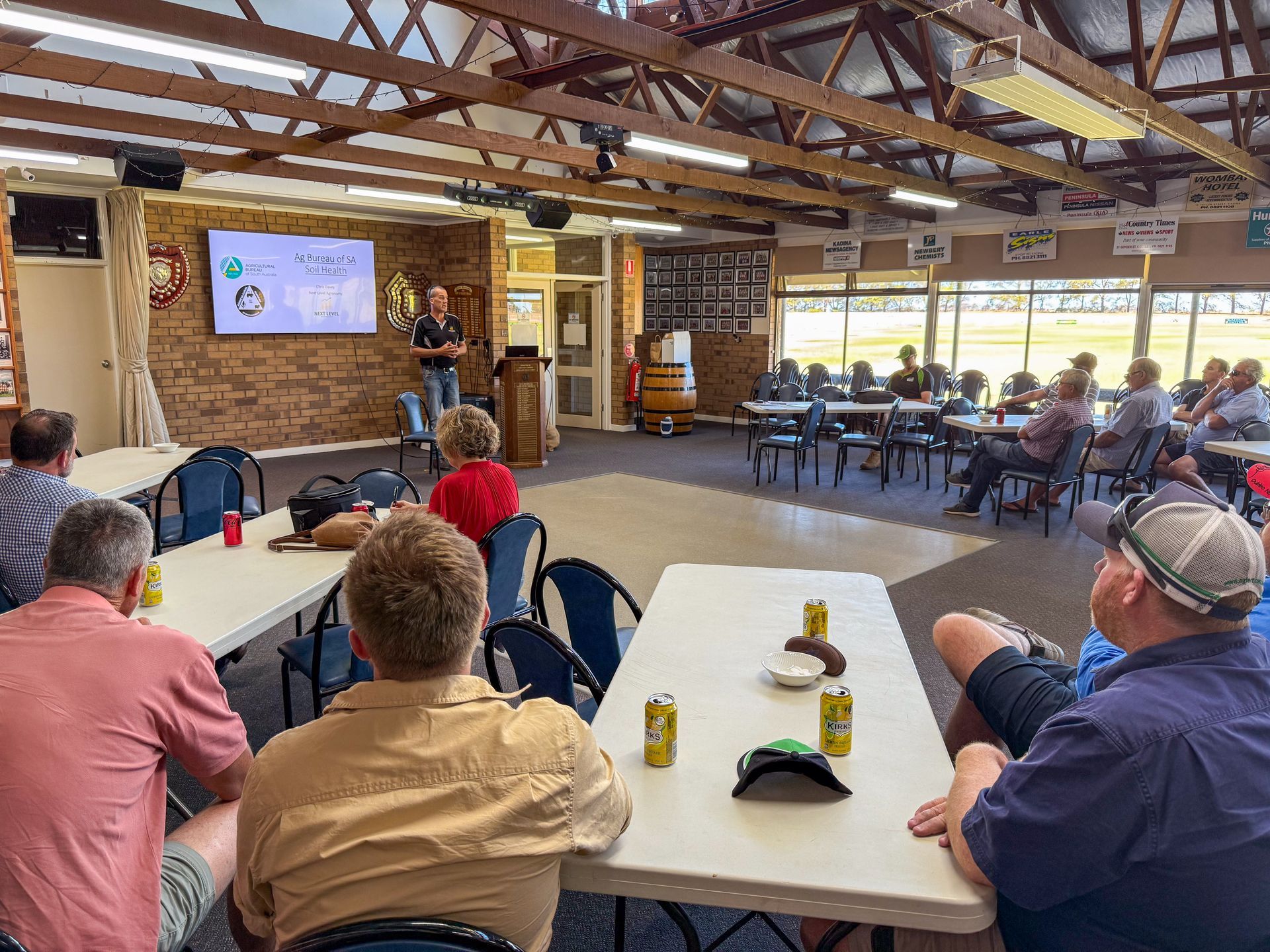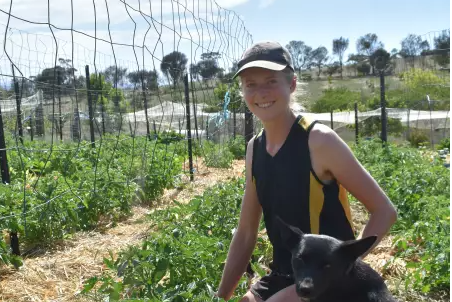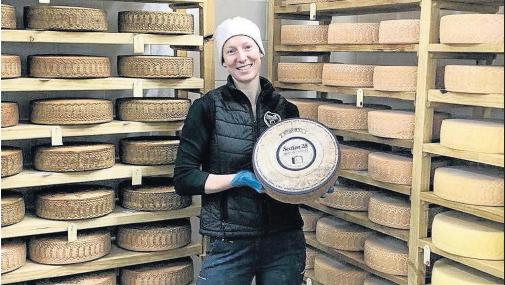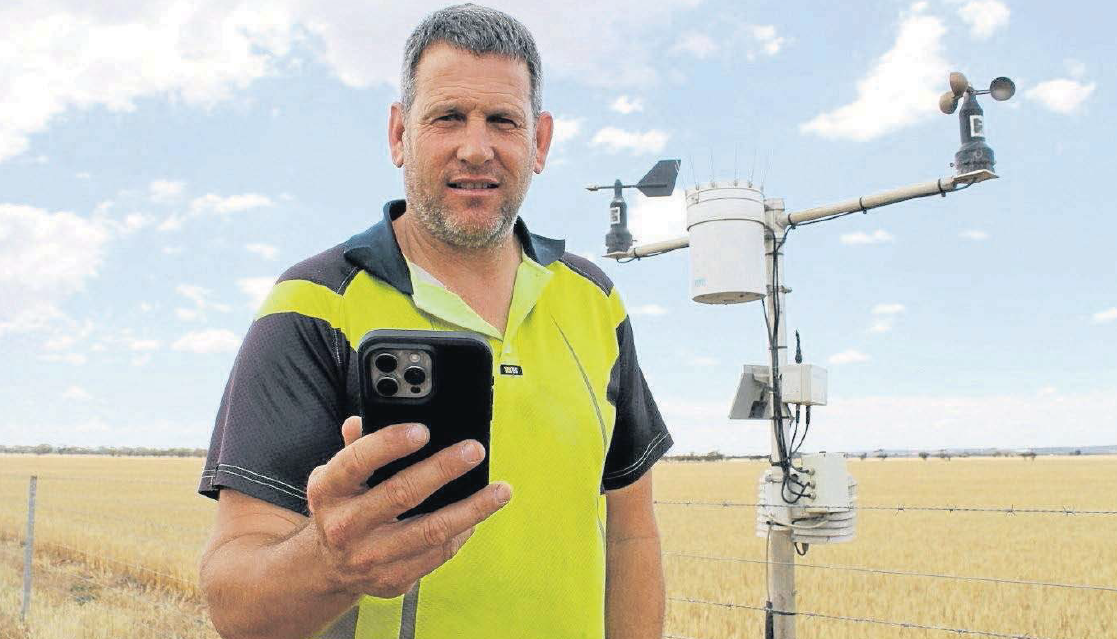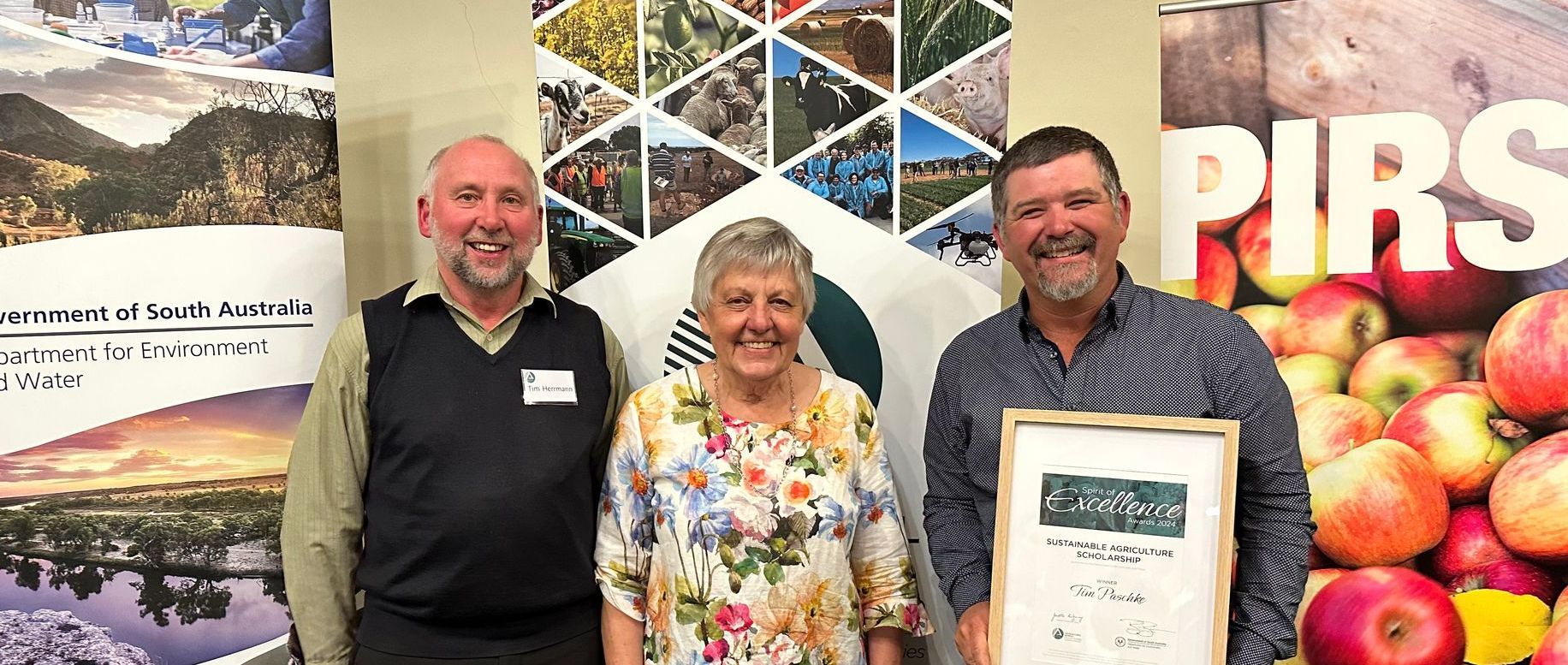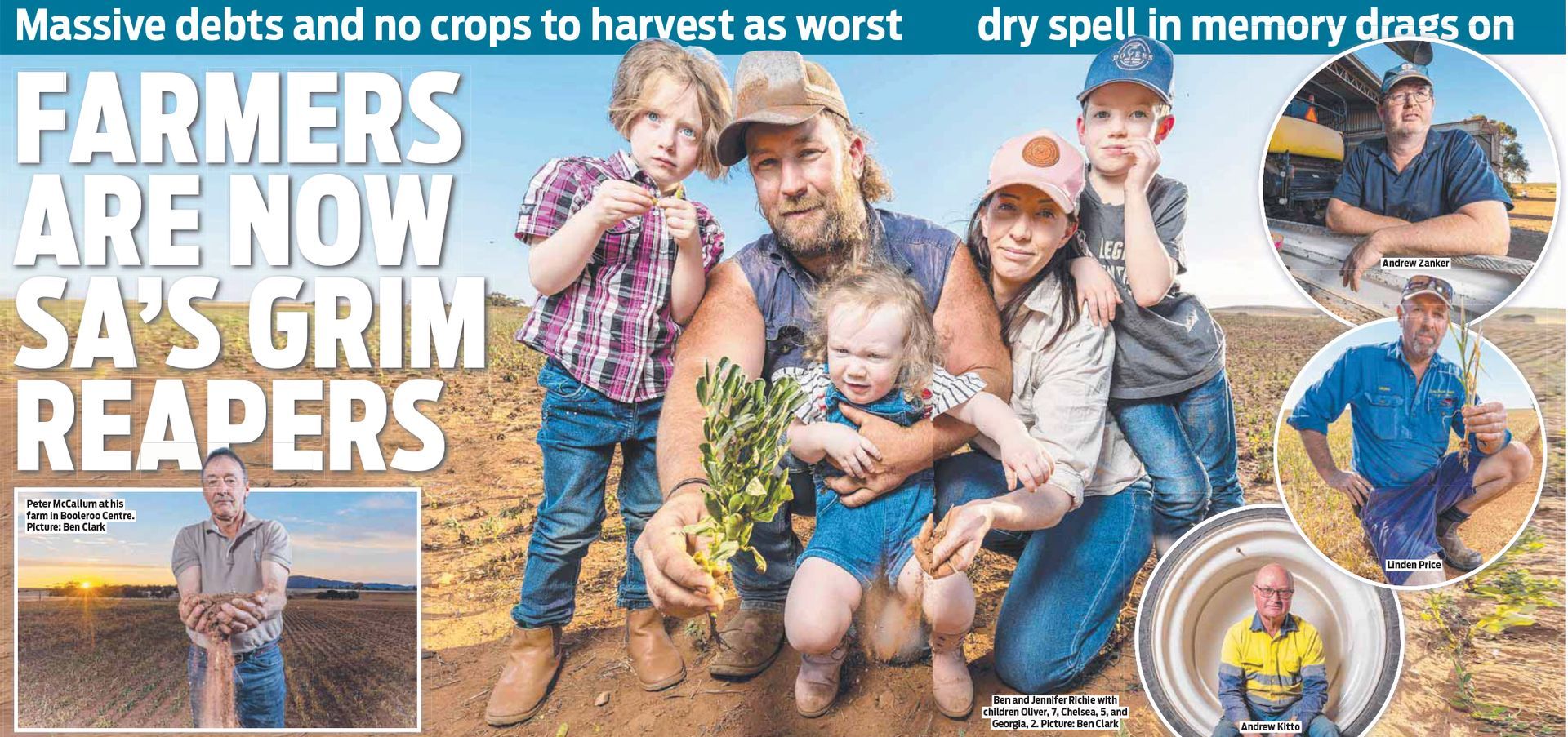Croppers weigh up options
As published in the Stock Journal by Alisha Fogden
October 3, 2024
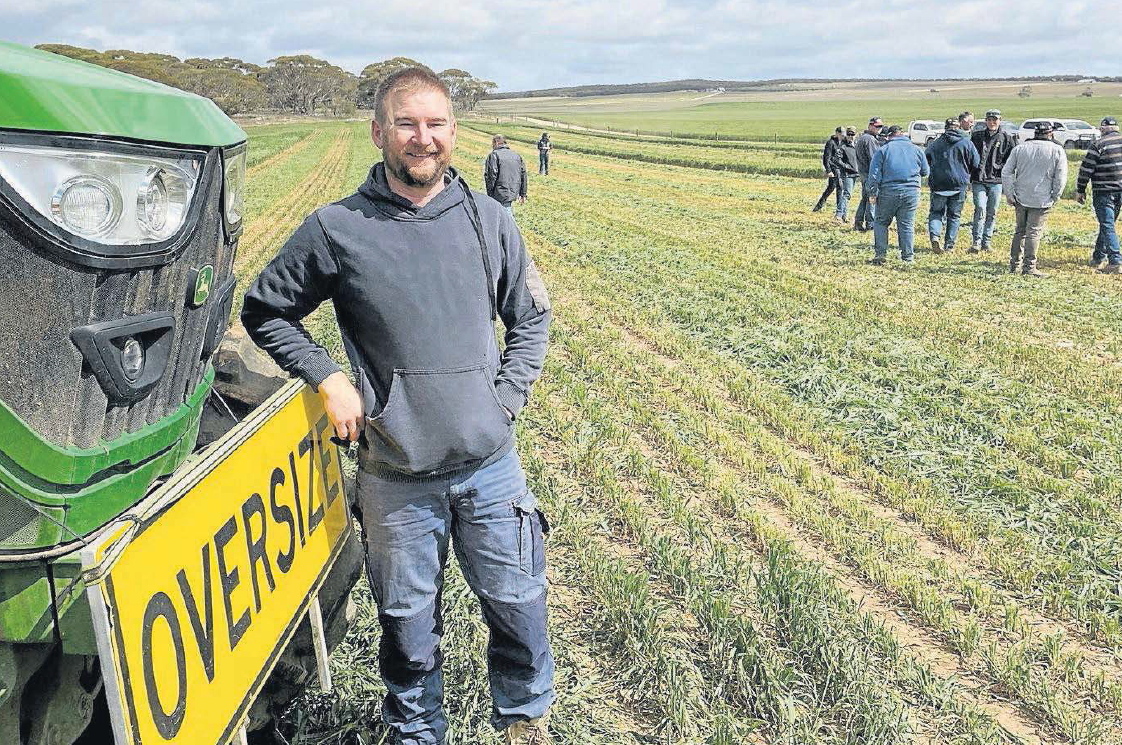
Monarto Ag Bureau president Dave Miegel had the tour visit his farm at Monteith, plus he had his hay mower in a
demonstration at the Stacey farm in Brinkley. Photo by Alisha Fogden
Despite not initially starting out as the theme, 'hay or harvest' became a common subject during a recent combined Ag Bureau crop walk in the Murraylands and Fleurieu.
And the lack of forecast rain and more potential frost has only increased the likelihood of damaged crops being cut for hay.
The Monarto and Milang Agriculture Bureaus joined forces on late last month to showcase crops from Monteith to Callington, Woodchester to Finniss, to nearly 50 farmers from the region.
The day started at Dave Miegel's farm at Monteith, where two newer barley varieties, Neo and Commodus, were compared side-by-side.
Mr Miegel said the crops had potential, with good subsoil moisture and 112 millimetre growing season rainfall.
But the frost on Sunday, September 15, wiped out between 85 and 90 per cent of his 600-hectare program.
The damaged crops, mainly cereals, are now destined for hay.
They will be windrowed this season because of the lack of bulk and the suitable weather, despite having a hay mower on-farm.
"There's no great rain on the horizon, we're meant to get 5mm this week and we got 1mm," he said.
"But it wouldn't have changed much anyway, the damage had been done that Sunday and Monday - we had -5 degrees for four hours."
Mr Miegel said his damaged beans and lentils would be desiccated and brown manured.
"They've at least done their job, fixed the nitrogen, ready for canola next year," he said.
Mr Meigel said they had about 15ha of barley and 50ha of canola still remaining to harvest.
"That was on very high ground - if it got frosted up there, god help everyone else," he said.
"If I can get my seed back on the barley, that will be a relief. They're pretty drought hit, but we're thinking they'll go anywhere between 1.5-2t/ha, while the hay will hopefully go 2t/ha or a touch more."
Mr Miegel said the widespread damage from one single frost event was the worst he had seen.
"One single event has caused so much damage," he said.
"Even our lucerne under pivot has had the handbrake put on. Normally by now we would be looking at a first cut, but we're 2-3 weeks away yet.
"We also had 30ha sown for hay that was a write-off, plus another 100ha at a client's place that has also failed. We have to head to the South East to fulfil our hay orders."
At James Stacey's place at nearby Brinkley, attendees got to compare two very good looking, but thirsty, Tomahawk and Calibre wheat crops.
Mr Stacey said, despite 200mm of summer rainfall and 5mm immediately post-seeding, the crops only had about 100mm growing season rainfall and the potential was "woeful".
"Economically hay is the better option," he said.
"Our GSR means that Calibre crop might only realise 1.6-1.7t/ha if harvested for grain, half its potential, while as hay it might make 3.5t/ha.
"We also have oats in for hay, but our oaten hay yields might only make 2t/ha, which is woeful when it's normally 4-5t/ha - mainly due to the lack of rain.
"We have some frost damage, mostly on our white sands, but nothing like what others have experienced, maybe only 5pc of our crops.
"We dry sowed our crops early, so a lot were through flowering when the frost hit, it got to -3.5 degrees here. "We're hoping our barley might make 1t/ha, when normally it's 3t/ha-plus. It doesn't even have enough volume to cut it for hay."
The Staceys also showcased a 70ha dryland lucerne crop that was struggling due to a lack of moisture, post-emergent spray damage and the cold, which was planted to address a problem light sand paddock, while also providing feed for their livestock.
"It certainly wasn't the bestyear for planting pastures," he said.
"But we're trying to improve the productivity on that kind of ground, get some perennials in and not have to crop it every year. We'll overseed it with veldt grass next winter and hopefully it goes a bit better."
Next stop was the Murray Bridge racecourse, where Lincoln Willis was growing Scepter wheat that was also on the edge.
Crop walk attendees put the crop at maybe 1.5t/ha, if taken through to harvest, but potentially 1.5-2t/ha if cut for hay.
"We were lucky to avoid bad frost here because we are on the face of a hill, but we do have a lot of other crops, barley and wheat, that will definitely get cut for hay because of frost damage and lack of moisture," he said.
"Plus the season has also affected our hay paddocks, so we need to cut more for ourselves.
"We'll start cutting the damaged hay in the next day or two."
Mr Willis crops up to 2800ha with father Andrew and brother Darren between Murray Bridge and Lake Alexandrina, but didn't put in canola this year because of the dry, and left more country for livestock.
He said the crop walk facilitated good discussion about the economic benefits of cutting for hay or harvesting for grain.
Tyson Paech hosted the tour group next at Callington, where he spoke of crop losses up to 99pc in peas, due to three days of -3 degrees.
That 40ha has since been windrowed for hay.
He said they had about 280ha of crop damaged by frost, which has since been cut for hay, from their 2430ha program. Most of it will be sold locally.
They had just 75-110mm of growing season rainfall across their properties.
"Our yields will definitely be down, especially canola - we've already cut 30pc of canola for hay, plus a little bit of wheat and some barley, but luckily the rest is looking OK," he said.
"I think the subsoil moisture from summer rains (about 175mm), stubble retention and sowing early helped."
Mr Paech was hopeful about some pea crops in more reliable country.
"(In) 2018 was the last tough season like this, while my dad would say 1982 and '67, but they were drought years," he said.
"(Then) 2019 was bad for frosts I believe, but nothing like this year.
"Thankfully we have all the hay cutting gear for years like this, but this year it will be less drought cutting and more frost cutting."


